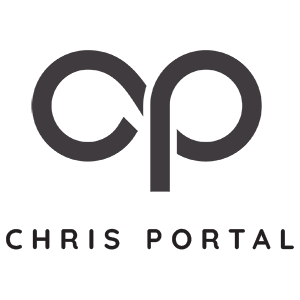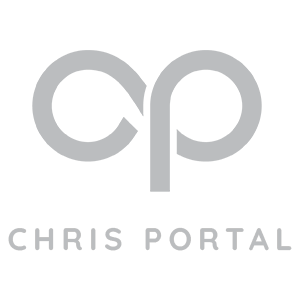[iframe: src=”http://player.vimeo.com/video/10347239?title=0&byline=0&portrait=0″ width=”580″ height=”247″ frameborder=”0″]
The concept for this video started back in December when my wife surprised me with a NYC helicopter ride for my birthday. Wanting to use the aerial footage in some way, and inspired by Philip Bloom’s “people” series, I decided to shoot some additional NYC footage and assemble a piece on the city.
Production
Aerial Footage
The first segment of the production was the helicopter ride over the city. I was completely unprepared for it, as the only thing my wife had told me ahead of time was to bring my Canon 5D to NYC to take some pictures. I didn’t expect to shoot any video, but just by chance, I decided to bring a few extra things just in case:
- Canon 50mm f1.2 L
- Canon 24mm f1.4 L
- Zacuto Z-Finder
- Fader ND
It was on a Saturday afternoon that we drove out to a helicopter hanger in NJ, arriving there about an hour before the scheduled flight. That hour was the only prep time I had for my first attempt at doing anything aerial. I used my iPhone to get a crash course on aerial photography and video, Googling sites and creating a mental plan of how I wanted to shoot stuff. I quickly learned the only way to get good aerial video was to have some sort of stabilizer to eliminate the helicopter vibrations. That kind of gear not being included in my “birthday” package, and given the rolling shutter issues DSLRs have, I didn’t have high hopes of getting great video.
At that point, I turned my attention to the other challenge I was going to have to deal with, which was lighting. We were scheduled to take off around 5pm for a 1 hour flight, which meant it was going to be daylight on our way out, dusk during our flight, and likely night time on the way back. I read you really wanted to minimize futzing around with the camera, or swapping lens during the flight, as the last thing you want to do is drop any gear over the city, so I did 2 things:
- Focused on pre-setting my camera with some custom functions, so I could easily switch from taking video to taking photos during the flight; and
- Stashed extra lens and ND filter in a secure, but easy to access pockets
It was stressful, but exciting as I had never been up in a helicopter. They removed the side doors for us, so we could shoot without any glass or doors getting in the way. I spent the whole time leaning out the side of the chopper, held in my seat by a seat belt and my footing.
As great as the Zacuto Z-Finder is for stabilizing the camera during handheld shots, it’s pretty useless when you’re sitting in this vibrating chopper, wind gusts blowing against you, and the cold making you shiver (it was freezing up there). I tried bracing my body different ways, holding the camera loosely, trying not to lean out too far to avoid the wind gusts, etc. It was a challenge, and it reflected in the quality of the footage. I have almost an hour’s worth of footage, but there was a lot of shake, wobble, and rolling shutter problems visible in the video, as well as some nasty lens flares that are distracting, which made it hard to use in post (more on that below). I’ll share some more footage and behind the scenes shots of the helicopter ride in a separate posting.
City Footage
After assembling some of the helicopter footage together, and realizing the footage quality wasn’t going to hold up for a long video, I went back to NY in February for the “second segment” of the production, to collect some city footage and create a piece of the city. I didn’t have a preconceived idea of what I wanted to get, other than people and iconic shots, so I spent a day walking around the city, taking the subway, going to parks, hitting various sites, etc. The toughest part of this was asking people if I could film them – some were happy to let me, some walked away with an attitude, and some did so only after I spared some change. Most people were cool about, even going so far as to ask for my “business card” or providing me their contact info so they could see the finished piece.
Post-Production
As is usually the case, I started cutting by selecting some music. In this case, I chose one of my favorite movie scores – Ennio Morricone’s “Deborah’s Theme”, from Once Upon a Time in America (a great film if you’ve got 4 hours to spare). It not only fit the mood and style of the piece I wanted to create, but considering the film takes place in NY over the span of multiple decades, it seemed somewhat befitting.
I wanted to build up to the aerial shots, so I used the initial assembly of my aerial footage, selected the most salvageable clips, and edited it down for a rough assembly of the ending. As a storyline/concept, I came up with the idea of starting underground with the subway footage (a “ground zero” of sorts), moving up to ground level, and then ending up above the city (overlooking Ground Zero). Along the way, I wanted to take the viewer from morning time, through day time, and into night time. I liked the concept, but I hadn’t shot stuff with this in mind, so I had to figure out some creative ways of transitioning spatially and temporally. The most difficult transition was from day time to evening, which I was able to make work with a match cut of sorts between the building seen from the boat, to the building overlooking Central Park.
As far as the technical end, there are a few things to note (I’ll try to post some additional details on these later on):
- I used the SmoothCam filter in Final Cut Pro to stabilize the helicopter footage. There clearly are “jello effects” still visible, but considering how unprepared I was for the aerial stuff, I was content to make the footage at least watchable.
- I’ve been wanting to practice using Apple’s Color, so I used it to do the color correction on this piece. I still find Magic Bullet Looks easier to use for color grading, so I used that on the corrected shots afterwards to style the look.
- In rendering out my cuts, I discovered some nasty ghosting and jaggies in the SmoothCam corrected footage. It turned out to be an interlacing issue where the Canon 5D footage was all marked as being interlaced, thereby causing my Final Cut Pro sequence to get set to an Upper field dominance. Setting the clips and sequence to a field dominance of None resolved the issue.
- Lastly, I decided to make this my first widescreen 2.35:1 video using Final Cut Pro’s Widescreen filter, hoping to convey a larger feel to the city (and the video).

